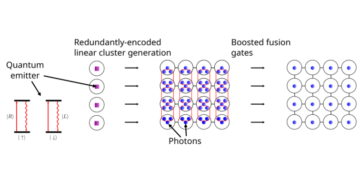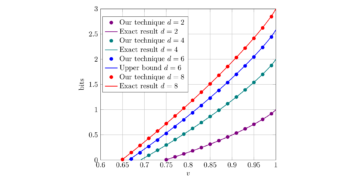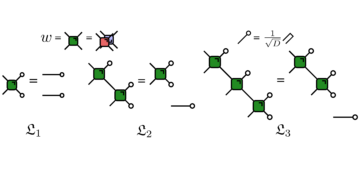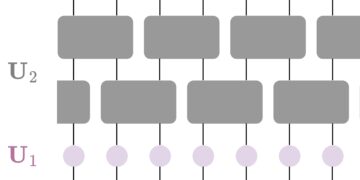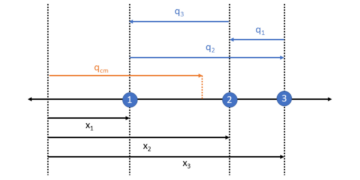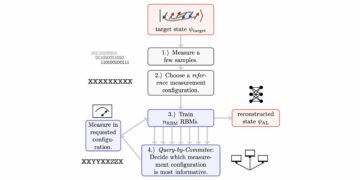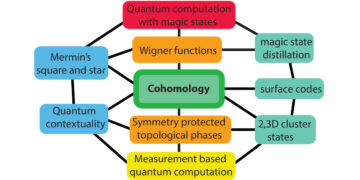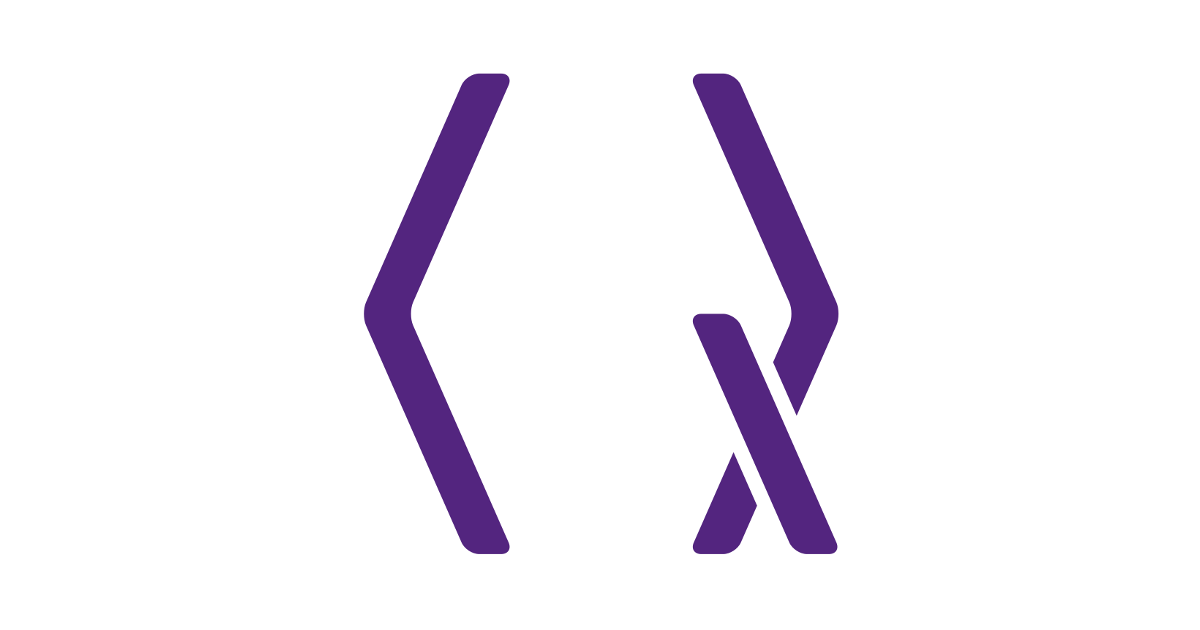
Institut für Theoretische Physik, Universität Innsbruck, Technikerstraße 21a, 6020 Innsbruck, Austria
Find this paper interesting or want to discuss? Scite or leave a comment on SciRate.
Abstract
The topology of classical networks is determined by physical links between nodes, and after a network request the links are used to establish the desired connections. Quantum networks offer the possibility to generate different kinds of entanglement prior to network requests, which can substitute links and allow one to fulfill multiple network requests with the same resource state. We utilize this to design entanglement-based quantum networks tailored to their desired functionality, independent of the underlying physical structure. The kind of entanglement to be stored is chosen to fulfill all desired network requests (i.e. parallel bipartite or multipartite communications between specific nodes chosen from some finite set), but in such a way that the storage requirement is minimized. This can be accomplished by using multipartite entangled states shared between network nodes that can be transformed by local operations to different target states. We introduce a clustering algorithm to identify connected clusters in the network for a given desired functionality, i.e. the required network topology of the entanglement-based network, and a merging algorithm that constructs multipartite entangled resource states with reduced memory requirement to fulfill all desired network requests. This leads to a significant reduction in required time and resources, and provides a powerful tool to design quantum networks that is unique to entanglement-based networks.
► BibTeX data
► References
[1] H. J. Kimble, Nature 453, 1023 (2008).
https://doi.org/10.1038/nature07127
[2] W. Kozlowski and S. Wehner, Proceedings of the Sixth Annual ACM International Conference on Nanoscale Computing and Communication 3, 1 (2019).
https://doi.org/10.1145/3345312.3345497
[3] K. Azuma, S. Bäuml, T. Coopmans, D. Elkouss, and B. Li, AVS Quantum Science 3, 014101 (2021).
https://doi.org/10.1116/5.0024062
[4] A. Pirker, J. Wallnöfer, and W. Dür, New J. Phys. 20, 053054 (2018).
https://doi.org/10.1088/1367-2630/aac2aa
[5] A. Pirker and W. Dür, New J. Phys. 21, 033003 (2019).
https://doi.org/10.1088/1367-2630/ab05f7
[6] C. Meignant, D. Markham, and F. Grosshans, Phys. Rev. A 100, 052333 (2019).
https://doi.org/10.1103/PhysRevA.100.052333
[7] L. Gyongyosi and S. Imre, Scientific Reports 9, 2219 (2019).
https://doi.org/10.1038/s41598-019-38495-w
[8] J. Miguel-Ramiro and W. Dür, New J. Phys. 22, 043011 (2020).
https://doi.org/10.1088/1367-2630/ab784d
[9] C. H. Bennett, G. Brassard, C. Crépeau, R. Jozsa, A. Peres, and W. K. Wootters, Phys. Rev. Lett. 70, 1895 (1993).
https://doi.org/10.1103/PhysRevLett.70.1895
[10] Z. Eldredge, M. Foss-Feig, J. A. Gross, S. L. Rolston, and A. V. Gorshkov, Phys. Rev. A 97, 042337 (2018).
https://doi.org/10.1103/PhysRevA.97.042337
[11] P. Sekatski, S. Wölk, and W. Dür, Phys. Rev. Research 2, 023052 (2020).
https://doi.org/10.1103/PhysRevResearch.2.023052
[12] J. I. Cirac, A. K. Ekert, S. F. Huelga, and C. Macchiavello, Phys. Rev. A 59, 4249 (1999).
https://doi.org/10.1103/physreva.59.4249
[13] A. S. Cacciapuoti, M. Caleffi, F. Tafuri, F. S. Cataliotti, S. Gherardini, and G. Bianchi, IEEE Network 34, 137 (2020).
https://doi.org/10.1109/mnet.001.1900092
[14] Y. Matsuzaki, S. C. Benjamin, and J. Fitzsimons, Phys. Rev. Lett. 104, 050501 (2010).
https://doi.org/10.1103/PhysRevLett.104.050501
[15] R. Van Meter, J. Touch, and C. Horsman, Progress in Informatics 8, 65 (2011).
https://doi.org/10.2201/niipi.2011.8.8
[16] M. Epping, H. Kampermann, and D. Bruß, New J. Phys. 18, 053036 (2016a).
https://doi.org/10.1088/1367-2630/18/5/053036
[17] S. Wehner, D. Elkouss, and R. Hanson, Science 362, eaam9288 (2018).
https://doi.org/10.1126/science.aam9288
[18] S. Pirandola, Communications Physics 2, 51 (2019).
https://doi.org/10.1038/s42005-019-0147-3
[19] A. K. Ekert, Phys. Rev. Lett. 67, 661 (1991).
https://doi.org/10.1103/PhysRevLett.67.661
[20] C. H. Bennett and S. J. Wiesner, Phys. Rev. Lett. 69, 2881 (1992).
https://doi.org/10.1103/PhysRevLett.69.2881
[21] M. Hein, J. Eisert, and H. J. Briegel, Phys. Rev. A 69, 062311 (2004a).
https://doi.org/10.1103/PhysRevA.69.062311
[22] M. Hein, W. Dür, J. Eisert, R. Raussendorf, M. Nest, and H. Briegel, in Quantum Computers, Algorithms and Chaos, Proceedings of the International School of Physics “Enrico Fermi,” Vol. 162, Varenna, 2005, edited by G. Casati, D. L. Shepelyansky, P. Zoller, and G. Benenti (IOS Press, Amsterdam 162, 10.3254/978-1-61499-018-5-115 (2006).
https://doi.org/10.3254/978-1-61499-018-5-115
[23] J. Miguel-Ramiro, A. Pirker, and W. Dür, npj Quantum Information 7, 135 (2021).
https://doi.org/10.1038/s41534-021-00472-5
[24] F. Hahn, A. Pappa, and J. Eisert, npj Quantum Information 5, 76 (2019).
https://doi.org/10.1038/s41534-019-0191-6
[25] A. Dahlberg and S. Wehner, Philosophical Transactions of the Royal Society A: Mathematical, Physical and Engineering Sciences 376, 20170325 (2018).
https://doi.org/10.1098/rsta.2017.0325
[26] A. Dahlberg, J. Helsen, and S. Wehner, Quantum 4, 348 (2020).
https://doi.org/10.22331/q-2020-10-22-348
[27] J. L. Gross and J. Yellen, Graph Theory and Its Applications. (2nd Edition). Chapman and Hall/CRC (2005).
https://doi.org/10.1201/9780429425134
[28] K. Das, Computers & Mathematics with Applications 48, 715 (2004).
https://doi.org/10.1016/j.camwa.2004.05.005
[29] U. von Luxburg, Statistics and Computing 17, 395 (2007).
https://doi.org/10.1007/s11222-007-9033-z
[30] H.-J. Briegel, W. Dür, J. I. Cirac, and P. Zoller, Phys. Rev. Lett. 81, 5932 (1998).
https://doi.org/10.1103/physrevlett.81.5932
[31] W. Dür, H.-J. Briegel, J. I. Cirac, and P. Zoller, Phys. Rev. A 59, 169 (1999).
https://doi.org/10.1103/physreva.59.169
[32] R. Meter and J. Touch, IEEE Communications Magazine 51, 64 (2013).
https://doi.org/10.1109/mcom.2013.6576340
[33] R. Van Meter, T. Satoh, T. D. Ladd, W. J. Munro, and K. Nemoto, Networking Science 3, 82 (2013).
https://doi.org/10.1007/s13119-013-0026-2
[34] S. Muralidharan, L. Li, J. Kim, N. Lütkenhaus, M. D. Lukin, and L. Jiang, Scientific reports 6, 20463 (2016).
https://doi.org/10.1038/srep20463
[35] S. Pirandola, R. Laurenza, C. Ottaviani, and L. Banchi, Nat. Commun. 8, 15043 (2017).
https://doi.org/10.1038/ncomms15043
[36] M. Cuquet and J. Calsamiglia, Phys. Rev. A 86, 042304 (2012).
https://doi.org/10.1103/physreva.86.042304
[37] M. Epping, H. Kampermann, and D. Bruß, New J. Phys. 18, 103052 (2016b).
https://doi.org/10.1088/1367-2630/18/10/103052
[38] S. Khatri, C. T. Matyas, A. U. Siddiqui, and J. P. Dowling, Phys. Rev. Research 1, 023032 (2019).
https://doi.org/10.1103/PhysRevResearch.1.023032
[39] M. Epping, H. Kampermann, C. macchiavello, and D. Bruß, New J. Phys. 19, 093012 (2017).
https://doi.org/10.1088/1367-2630/aa8487
[40] E. Schoute, L. Mancinska, T. Islam, I. Kerenidis, and S. Wehner, arXiv preprint arXiv:1610.05238 (2016).
https://doi.org/10.48550/arXiv.1907.11630
arXiv:1610.05238
[41] L. Gyongyosi and S. Imre, Scientific Reports 7, 14255 (2017).
https://doi.org/10.1038/s41598-017-14394-w
[42] L. Gyongyosi and S. Imre, Phys. Rev. A 98, 022310 (2018).
https://doi.org/10.1103/PhysRevA.98.022310
[43] M. Pant, H. Krovi, D. Towsley, L. Tassiulas, L. Jiang, P. Basu, D. Englund, and S. Guha, npj Quantum Information 5, 25 (2019).
https://doi.org/10.1038/s41534-019-0139-x
[44] K. Chakraborty, A. Dahlberg, F. Rozpedek, and S. Wehner, preprint arXiv: 1907.11630 (2019).
https://doi.org/10.48550/arXiv.1907.11630
[45] A. Likas, N. Vlassis, and J. J. Verbeek, Pattern Recognition 36, 451 (2003).
https://doi.org/10.1016/s0031-3203(02)00060-2
[46] T. Satoh, K. Ishizaki, S. Nagayama, and R. Van Meter, Phys. Rev. A 93, 032302 (2016).
https://doi.org/10.1103/PhysRevA.93.032302
[47] G. Vardoyan, S. Guha, P. Nain, and D. Towsley, ACM SIGMETRICS Performance Evaluation Review 47, 27 (2019).
https://doi.org/10.1145/3374888.3374899
[48] G. Vardoyan, S. Guha, P. Nain, and D. Towsley, Performance Evaluation 144, 102141 (2020).
https://doi.org/10.1016/j.peva.2020.102141
[49] T. Coopmans, R. Knegjens, A. Dahlberg, D. Maier, L. Nijsten, J. de Oliveira Filho, M. Papendrecht, J. Rabbie, F. Rozpędek, M. Skrzypczyk, L. Wubben, W. de Jong, D. Podareanu, A. Torres-Knoop, D. Elkouss, and S. Wehner, Communications Physics 4, 164 (2021).
https://doi.org/10.1038/s42005-021-00647-8
[50] J. Eisert and H. J. Briegel, Phys. Rev. A 64, 022306 (2001).
https://doi.org/10.1103/PhysRevA.64.022306
[51] M. Hein, J. Eisert, and H. J. Briegel, Phys. Rev. A 69, 062311 (2004b).
https://doi.org/10.1103/PhysRevA.69.062311
Cited by
[1] Maria Flors Mor-Ruiz and Wolfgang Dür, “Noisy Stabilizer Formalism”, arXiv:2212.08677, (2022).
[2] Jessica Illiano, Marcello Caleffi, Antonio Manzalini, and Angela Sara Cacciapuoti, “Quantum Internet Protocol Stack: a Comprehensive Survey”, arXiv:2202.10894, (2022).
[3] Pritam Halder, Ratul Banerjee, Shiladitya Mal, and Aditi Sen De, “Manifestation of Rank-Tuned Weak Measurements Towards Featured State Generation”, arXiv:2208.09317, (2022).
[4] Pritam Halder, Ratul Banerjee, Srijon Ghosh, Amit Kumar Pal, and Aditi SenDe, “Circulating genuine multiparty entanglement in a quantum network”, Physical Review A 106 3, 032604 (2022).
The above citations are from SAO/NASA ADS (last updated successfully 2023-02-10 17:13:21). The list may be incomplete as not all publishers provide suitable and complete citation data.
On Crossref’s cited-by service no data on citing works was found (last attempt 2023-02-10 17:13:19).
This Paper is published in Quantum under the Creative Commons Attribution 4.0 International (CC BY 4.0) license. Copyright remains with the original copyright holders such as the authors or their institutions.
- SEO Powered Content & PR Distribution. Get Amplified Today.
- Platoblockchain. Web3 Metaverse Intelligence. Knowledge Amplified. Access Here.
- Source: https://quantum-journal.org/papers/q-2023-02-09-919/
- 1
- 10
- 100
- 11
- 1998
- 1999
- 2001
- 2011
- 2012
- 2016
- 2017
- 2018
- 2019
- 2020
- 2021
- 2022
- 28
- 39
- 67
- 7
- 70
- 9
- 98
- a
- above
- ABSTRACT
- access
- accomplished
- ACM
- affiliations
- After
- Alexander
- algorithm
- algorithms
- All
- amsterdam
- and
- annual
- applications
- author
- authors
- Benjamin
- between
- Break
- Chaos
- chosen
- circulating
- clustering
- comment
- Commons
- Communication
- Communications
- complete
- comprehensive
- computers
- computing
- Conference
- connected
- Connections
- copyright
- data
- Den
- Design
- determined
- different
- discuss
- edition
- Engineering
- establish
- Ether (ETH)
- evaluation
- featured
- found
- from
- Fulfill
- functionality
- generate
- generation
- given
- graph
- gross
- harvard
- holders
- HTTPS
- identify
- IEEE
- in
- independent
- information
- institutions
- interesting
- International
- Internet
- introduce
- iOS
- JavaScript
- journal
- Kim
- Kind
- Last
- Leads
- Leave
- License
- links
- List
- local
- magazine
- Maier
- mathematical
- mathematics
- measurements
- Memory
- merging
- Month
- multiple
- Nature
- Nest
- network
- networking
- networks
- New
- nodes
- offer
- ONE
- open
- Operations
- optimized
- original
- Paper
- Parallel
- Pattern
- performance
- physical
- Physics
- plato
- Plato Data Intelligence
- PlatoData
- possibility
- powerful
- press
- Prior
- Proceedings
- Progress
- protocol
- provide
- provides
- published
- publisher
- publishers
- Quantum
- quantum computers
- quantum information
- Quantum Internet
- quantum networks
- recognition
- Reduced
- references
- remains
- Reports
- request
- requests
- required
- requirement
- research
- resource
- Resources
- review
- royal
- same
- School
- Science
- SCIENCES
- set
- shared
- significant
- sixth
- Society
- some
- specific
- stack
- State
- States
- statistics
- storage
- stored
- structure
- Successfully
- such
- suitable
- Survey
- tailored
- Target
- The
- their
- time
- Title
- to
- tool
- touch
- towards
- Transactions
- transformed
- under
- underlying
- unique
- updated
- URL
- utilize
- volume
- von
- W
- which
- works
- year
- yellen
- zephyrnet

